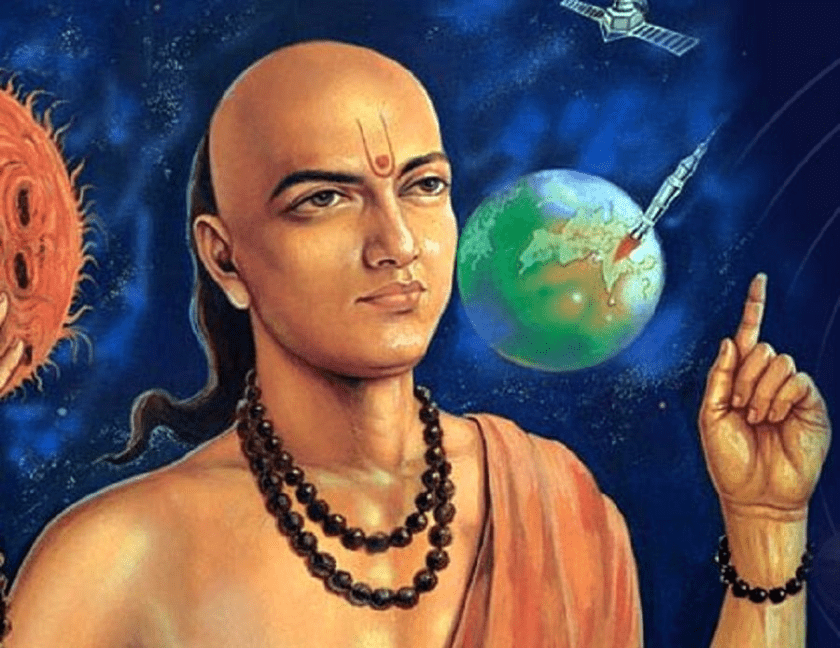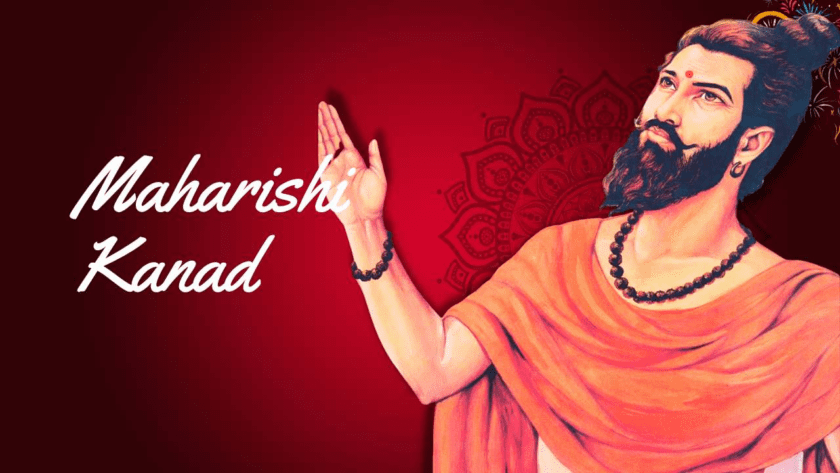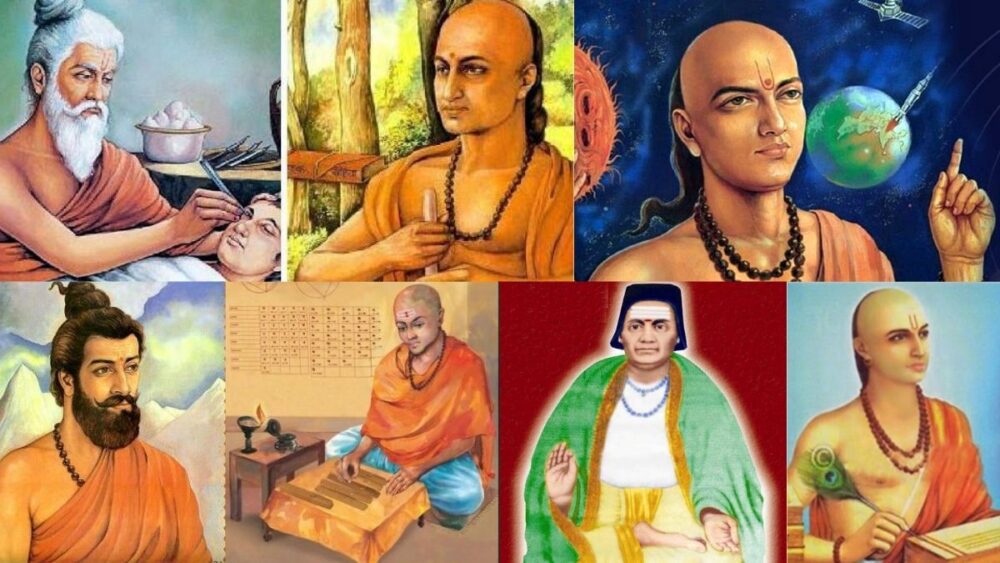India has etched its name in space history on August 23, 2023. It became the first country to make a soft landing on the Moon’s south pole and the fourth country after Russia, the US, and China to land on the moon. It was a moment of pride for the 1.4 billion Indians and proved India’s prowess in the field of space exploration.
India is one of the oldest civilizations of the world and even in ancient times, its scientists contributed immensely to the field of science and technology and left their impact on the world. From astronomy and mathematics to medicine and metallurgy, scientists of ancient India made groundbreaking discoveries and devised remarkable theories. Let’s take a look at 10 such great scientists of ancient India and their discoveries:
Table of Contents
Best Scientist of Ancient India –
Aryabhatta

Aryabhatta was a 5th-century mathematician, astronomer, astrologer, and physicist. He is often referred to as the “ The Father of Indian mathematics.” At the age of 23, he wrote Aryabhattiya which is a summary of mathematics of his time. There are four sections of this scholarly work.
In the first section, he describes the method of denoting big decimal numbers by alphabet. In the second section, we find difficult questions from topics of modern-day mathematics such as number theory, geometry, trigonometry, and algebra. The remaining two sections are on astronomy.
Aryabhatta showed that zero was not just a numeral but also a symbol and a concept. The discovery of zero enabled him to find the exact distance between the earth and the moon. The discovery of zero also opened up a new dimension of negative numerals.
Aryabhatta contributed immensely to the field of science too, particularly astronomy. Disregarding the popular view that the earth is immovable, Aryabhatta stated his theory that ‘ the earth is round and rotates on its own axis’. He explained the appearance of the sun moving from east to west is false by giving examples. He also correctly pointed out that the moon and planets shined by reflected sunlight. He also gave a scientific explanation of the solar and lunar eclipse.
Bhaskara II

Bhaskara II was a leading mathematician and astronomer from the 12th century. He is famous for his book Siddhanta Shiromani. It is divided into 4 sections: Lilavati( Arithmetic), Beejaganit (Algebra), Goladhyaya (sphere), and Grahaganit ( mathematics of planets). In the nineteenth century, an Englishman, James Taylor, translated Lilavati and made his work known to the world. Bhaskara II contributions laid the foundation for future mathematical advancements in our world.
Charaka

Charaka is regarded as the ‘ Father of ancient Indian science of Medicine’. He was the Raj Vaidya ( royal doctor) in the court of Kanishka. His treatise, called the Charaka Samhita is a comprehensive compilation of medical knowledge. It has the description of a large number of diseases and their causes as well as the ways of treating them. He was the first to talk about digestion, metabolism, and immunity as important for health and medical science. Charaka’s views on the importance of preventive medicine and holistic healing approaches influenced medical practices across the world.
Sushruta

Sushruta was a pioneer in the field of surgery and is also known as the ‘Father of Surgery’ for his remarkable contributions in this field. His treatise, Sushruta Samhita, is a compendium of surgical procedures including plastic surgery, ophthalmic surgery, and orthopedics.
In Sushruta Samhita, over 1100 diseases are mentioned and over 760 plants are described. All parts, roots, bark, juice, resin, and flowers are used. Cinnamon, sesame, pepper, and ginger are household remedies even today.
Sushruta’s greatest contribution was in the field of rhinoplasty( plastic surgery) and ophthalmic surgery( removal of cataracts). In Sushruta Samhita, there is a step-by-step description of these operations. Some serious operations performed included taking out the foetus from the womb, repairing a damaged rectum, removing stones from the bladder, etc.
Sushruta’s use of anesthesia, sophisticated surgical instruments, and emphasis on surgical ethics showcased his advanced understanding of medical science.
Kanad

Kanad was a 6th-century scientist of Vaisheshika school, one of the six systems of Indian philosophy. His original name was Aulukya. He got the name Kanad because he was interested in minute particles called ‘kana’ even as a child. He postulated that matter is composed of indivisible particles called ‘anu’ or atoms. Kanad’s atomic theory was well ahead of his time and anticipated several concepts later confirmed by modern atomic physics.
Nagarjuna

Nagarjuna, a renowned philosopher and alchemist, made significant contributions to the field of chemistry in ancient India. His work explored the transformation of metals, purification techniques, and the extraction of medicinal compounds. Nagarjuna’s alchemical knowledge and methodologies laid the groundwork for the development of chemical processes in ancient India.
Bramhagupta

Bramhagupta was an exceptional mathematician and astronomer from the 7th century and he revolutionized the study of numbers. He wrote Brahm Sputa Siddhantika wherein he introduced zero as a numerical entity, developed algorithms for arithmetical operations, and provided solutions for quadratic equations. The Arabs came to know about our mathematical systems through some of his works.
Varahamihira

Varahamihira, an eminent astronomer and astrologer flourished in ancient India. His works, Brihat Samhita and Pancasiddhantika included diverse topics ranging from astronomy, mathematics, geography, and astrology.
Varahamihira was one of the nine gems in the court of Vikramaditya. His predictions were so accurate that King Vikramaditya gave him the title ‘ Varaha’. He made immense contributions to the fields of hydrology, geology, and ecology.
Baudhayan

Baudhayana ( 800 B.C. to 740 B.C.) is said to be the original mathematician behind the Pythagoras theorem. Pythagoras theorem was indeed known much before Pythagoras was born and it was the Indians who discovered it. He authored a book called The Sulba Sutras. It was widely believed that he was also a priest and an architect of high standards. The value of ‘pi’ was first calculated by him.
Patanjali

Yoga was passed on by word of mouth from one sage to another. It was Patanjali who systematically compiled and presented it in his book Yoga Sutras. Patanjali’s systematic exposition of the practice and philosophy of Yoga, along with guidelines for mental and spiritual development has had a deep impact on the world’s understanding of Yoga.
Conclusion
The contribution of ancient Indian scientists towards science was significant. Learning was encouraged in the ancient period and these scientists received considerable support from their rulers. Many educational institutions were established to impart this knowledge to eager learners. Slowly this knowledge spread to other parts of the world and contributed towards the development of science and technology.
FAQs
Q – How did ancient Indian scientists contribute to science?
A – Ancient Indian scientists made many significant contributions to science. They invented the zero and the number system, the value of pi, algebra, trigonometry and calculus. They were successful in explaining the concepts behind eclipses.
Q – How was science encouraged in ancient India?
A – In ancient India, the rulers encouraged scientific thinking and the scientists were highly respected. Many reputed schools and universities were established. Learning was highly encouraged.
Q – Who was physicist in ancient India?
A – Aryabhatta was a fifth century mathematician, astronomer, astrologer, and physicist. He authored Aryabhattiya.
Q – Who was the chemist in ancient India?
A – Nagarjuna and Kanad were the chemists of ancient India. Their contribution was ground- breaking.
Q – What is the golden age of Indian science?
A – The period of Gupta rule between 300 and 600 CE has been called the Golden Age of India for its advances in science and emphasis on classical Indian art and literature.

